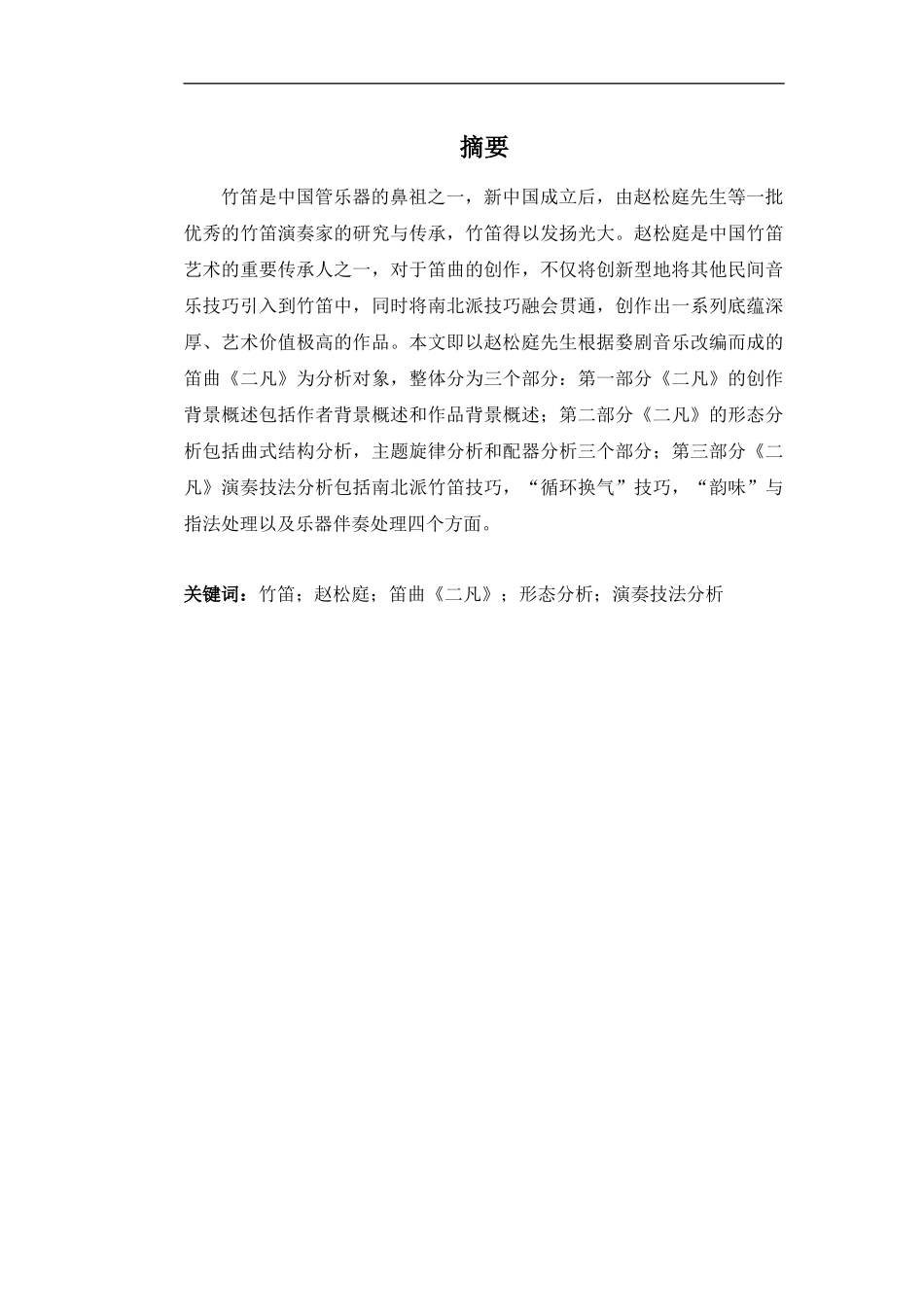摘要竹笛是中国管乐器的鼻祖之一,新中国成立后,由赵松庭先生等一批优秀的竹笛演奏家的研究与传承,竹笛得以发扬光大。赵松庭是中国竹笛艺术的重要传承人之一,对于笛曲的创作,不仅将创新型地将其他民间音乐技巧引入到竹笛中,同时将南北派技巧融会贯通,创作出一系列底蕴深厚、艺术价值极高的作品。本文即以赵松庭先生根据婺剧音乐改编而成的笛曲《二凡》为分析对象,整体分为三个部分:第一部分《二凡》的创作背景概述包括作者背景概述和作品背景概述;第二部分《二凡》的形态分析包括曲式结构分析,主题旋律分析和配器分析三个部分;第三部分《二凡》演奏技法分析包括南北派竹笛技巧,“循环换气”技巧,“韵味”与指法处理以及乐器伴奏处理四个方面。关键词:竹笛;赵松庭;笛曲《二凡》;形态分析;演奏技法分析AbstractBamboo flute is the major member of Chinese national wind musical instruments and it was very popular in the whole nation. After the China independence, After years of systematic research and practice from Zhao Song-ting and other people, Bamboo flute to be carried forward. As Chinese bamboo flute art heritage, combine the techniques of the north and the South, and rooted in Chinese folk music live earth, Mr Zhao composed a large number of very fine bamboo flute, This article talks about “Er-Fan”, analysis of its form and performance techniques, According to the structure, the paper is divided into three parts :which the first part is the background and the second is the analysis and instructionabout “Er-Fan”,The third part is the conclusionperformance technique application.Keywords: Bamboo flute; Playing techniques;“Er-Fan”; Zhao Song-ting目录...........................................................1.......................................1..........................................1..........................................1...........................................2..............................................2..............................................3.........


